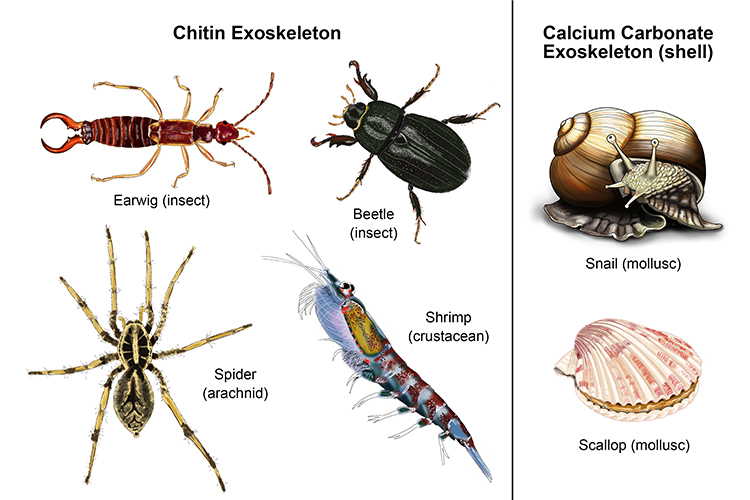Endoskeletons and Exoskeletons
If the skeleton is internal, such as in mammals, it is called an endoskeleton. This means that the skeleton is on the inside of the body.
If the skeleton is external, such as in woodlice, beetles or crabs, it is called an exoskeleton. Exoskeletons have a hard outer shell.
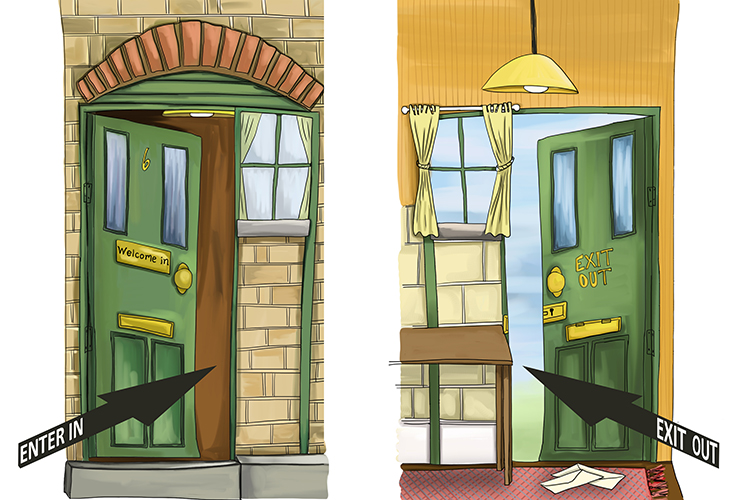
Endoskeleton = Enter In = Inside = Internal
Exoskeleton = Exit = Outside = External
NOTE:
Animals can have an internal (endoskeleton) or an external (exoskeleton) skeleton, or none at all.
Examples of endoskeletons
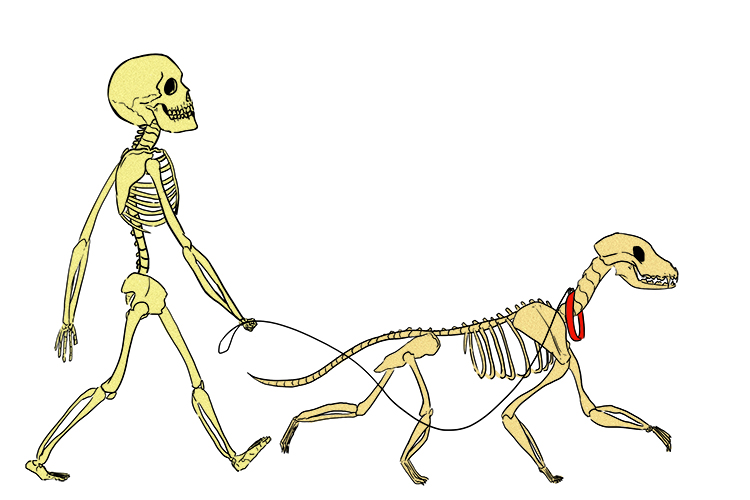
All humans have an endoskeleton, and so do dogs.
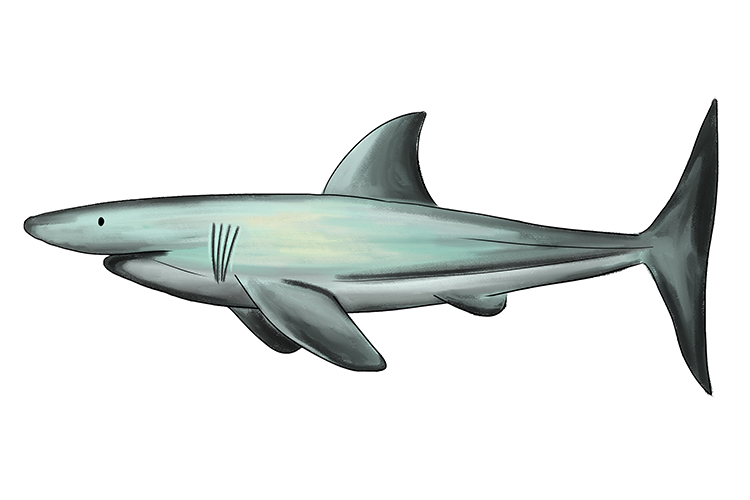
Sharks also have endoskeletons, but these are made of cartilage and not bone. Cartilage doesn’t preserve as well as bones, which means that fossil records are limited.
Further examples of animals with endoskeletons:
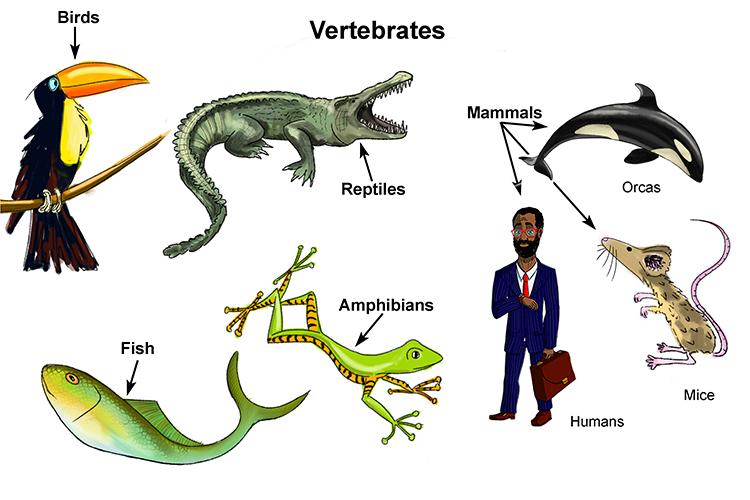
Examples of Exoskeletons
